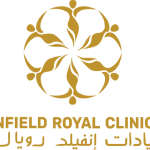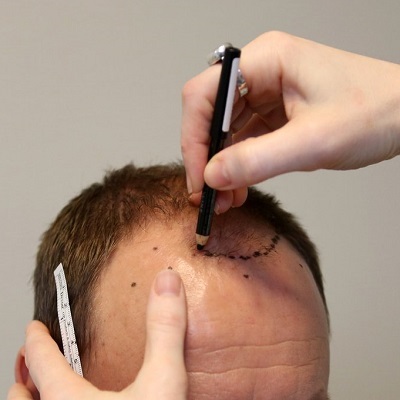Introduction
Hair transplants have become increasingly popular as a permanent solution to hair loss. This surgical procedure of Hair Transplant in Muscat involves relocating hair follicles from a donor area, typically the back or sides of the head, to areas experiencing thinning or balding. While the primary motivation for many individuals undergoing hair transplants is to restore a youthful hairline, the procedure offers a range of benefits that impact various aspects of life, from psychological well-being to social confidence.
The Hair Transplant Process
1. Consultation and Assessment
The hair transplant journey begins with a consultation where a specialist assesses the patient's hair loss pattern, scalp condition, and overall health. This evaluation is crucial to determine candidacy for the procedure and to develop a personalized treatment plan.
2. Donor Area Preparation
The donor area, typically at the back of the head, is prepared by trimming the hair short. This allows the surgeon to easily access the hair follicles for extraction.
3. Extraction of Hair Follicles
There are two primary methods for extracting hair follicles: Follicular Unit Transplantation (FUT) and Follicular Unit Extraction (FUE). In FUT, a strip of the scalp is removed from the donor area, and the follicles are dissected under a microscope. In FUE, individual follicles are extracted directly from the scalp using a specialized tool. Both methods have advantages, and the choice depends on the patient’s needs and the surgeon’s recommendation.
4. Graft Preparation and Placement
The extracted hair follicles are carefully prepared for transplantation. The surgeon then creates tiny incisions in the recipient area, where the follicles are meticulously placed. The placement of the grafts is a critical step, as it determines the naturalness and density of the final result.
5. Post-Procedure Care
After the procedure, the patient receives detailed aftercare instructions, including how to care for the scalp, manage discomfort, and promote healing. Follow-up appointments are scheduled to monitor progress and address any concerns.
Benefits of Hair Transplants
1. Natural and Permanent Results
One of the most significant benefits of hair transplants is that the results are natural and permanent. Since the transplanted hair follicles are taken from areas resistant to hair loss, they continue to grow throughout a person’s life. The outcome is a natural-looking hairline that blends seamlessly with existing hair, eliminating the need for wigs, hairpieces, or temporary solutions.
2. Enhanced Self-Confidence
Hair loss can profoundly impact self-esteem and confidence. Many individuals report feeling less attractive or self-conscious about their appearance. By restoring a full head of hair, hair transplants can dramatically enhance self-confidence. This newfound confidence often translates into improved social interactions, professional opportunities, and overall quality of life.
3. Low Maintenance
Unlike other hair restoration methods that require ongoing maintenance, such as topical treatments or hairpieces, hair transplants offer a low-maintenance solution. Once the transplanted hair has grown in, it requires no special care beyond regular hair hygiene. Patients can cut, style, and treat their hair just like their natural hair.
4. Cost-Effective in the Long Run
While the initial cost of a hair transplant may be higher than other hair loss treatments, it is a one-time investment that offers permanent results. Over time, the cumulative cost of non-surgical treatments, such as medications, can exceed the cost of a hair transplant. For many, the procedure proves to be more cost-effective in the long run.
5. No Need for Continuous Treatment
Hair transplants eliminate the need for ongoing treatments or repeated procedures. Unlike medications that require continuous use to maintain results, the effects of a hair transplant are long-lasting. This can be particularly appealing to those who prefer a one-time solution rather than a commitment to ongoing treatments.
Characteristics of a Successful Hair Transplant
1. Experienced and Skilled Surgeon
The success of a hair transplant largely depends on the expertise of the surgeon performing the procedure. An experienced surgeon with a track record of successful transplants is essential to achieving natural and satisfying results.
2. Proper Patient Selection
Not everyone is an ideal candidate for a hair transplant. Factors such as the extent of hair loss, hair type, scalp condition, and overall health play a crucial role in determining eligibility. A thorough consultation and assessment are necessary to ensure the patient is a good candidate for the procedure.
3. Natural Hairline Design
A key characteristic of a successful hair transplant is a natural-looking hairline. The surgeon must carefully design the hairline to suit the patient’s facial features and age, ensuring a result that is both aesthetically pleasing and age-appropriate.
4. High Graft Survival Rate
The survival rate of the transplanted hair follicles is a critical factor in the success of the procedure. Proper handling and placement of the grafts during the transplant process are vital to maximizing their survival and ensuring a dense, natural result.
Conclusion
Hair transplants offer more than just a new hairline; they provide a comprehensive solution to hair loss that enhances both appearance and quality of life. With permanent, natural results, increased self-confidence, and a cost-effective approach, hair transplants have become the gold standard in hair restoration. When performed by a skilled surgeon, the benefits extend beyond aesthetics, impacting every patient’s life. Whether seeking to regain lost confidence or simply restore a youthful appearance, hair transplants are a transformative procedure that goes beyond cosmetic enhancement, offering a renewed sense of self and well-being.






Comments